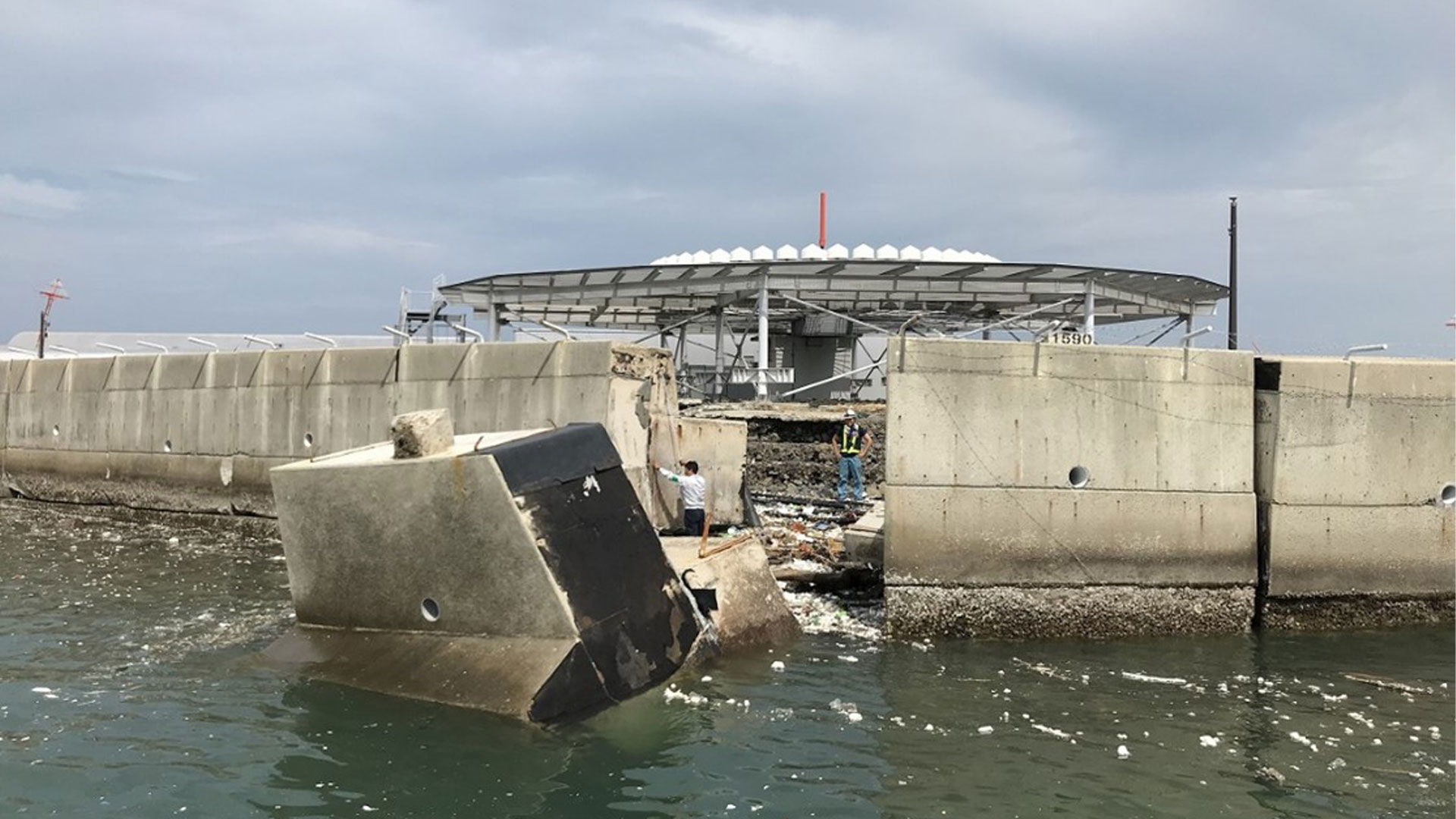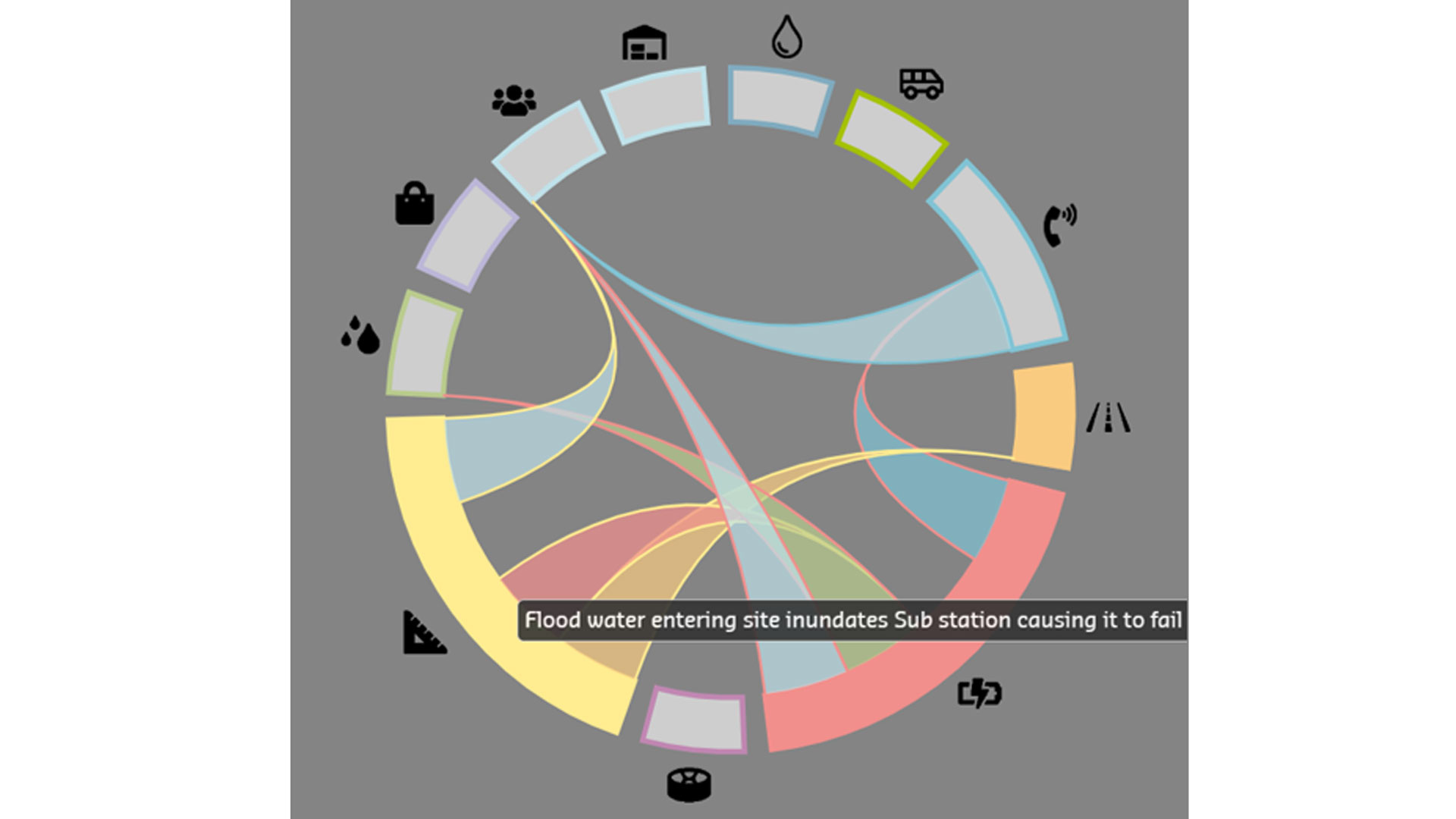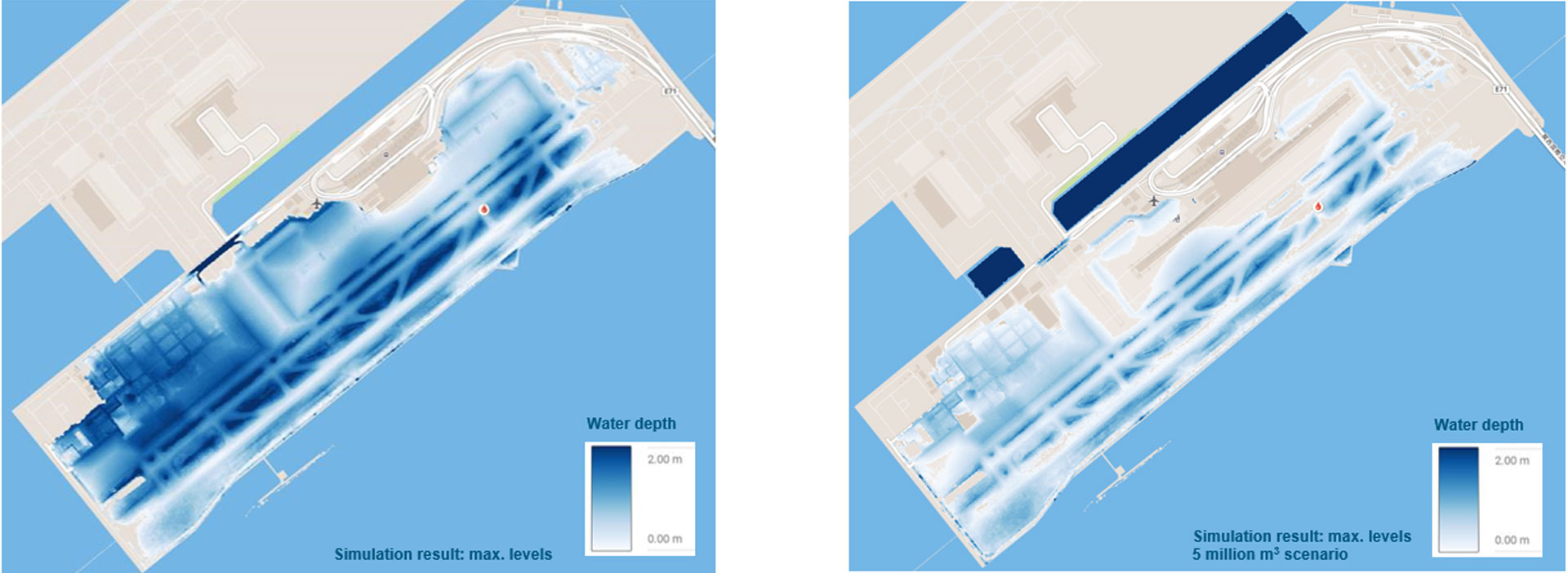Improving climate resilience at Kansai International Airport

Proposed solution
Increased protection of critical assets and priority areas
Safeguarding passengers and staff during extreme weather
Boosting stakeholder collaboration and understanding of flood scenarios
Like many airports in Asia and around the world, Kansai Airport is built on reclaimed, low-lying land – making it susceptible to floods. The airport was badly affected when the worst typhoon to hit Japan in 25 years struck in 2018. There was severe damage to airport infrastructure and operations were brought to a standstill for two weeks.

A unique combination of expertise – to improve climate resilience
Seeing the damage caused by the typhoon and understanding the need to improve Kansai’s airport resilience, the operators of Kansai Airport decided to bolster their natural disaster mitigation.
In doing so they set three key goals:
- Anticipate the effects of climate disasters on the airport infrastructure and critical assets
- Develop a detailed mitigation plan that will increase the protection of
- passengers and staff members
- critical assets and priority areas
- Reduce the impact of climate disaster by:
- decreasing downtime of operations
- cost-effective adaptation measures
- minimising delays and negative influence on customer experience
Realizing the airport’s vulnerability to typhoon-induced flooding, Kansai Airport was keen to find a solution in a timely manner. In this project they sought NACO’s unique combination of domain expertise as a world-class airport planning consultant, with knowledge of experts in water and flood resilience from group company Haskoning.
Haskoning’s water management and flood resilience expertise come from its roots in the Netherlands, where the below-sea-level country is constantly innovating to defend itself from flooding. In doing so, the team took a ‘build with nature’ approach – using natural processes and materials to work with nature, rather than against it.
By taking a long-term perspective towards disaster resilience for airports, we can work towards mitigation, adaptation, and resilience by design – working with nature, instead of against it, to enable airports to pursue the best solutions, safeguard business continuity and contributing to a safe and comfortable passenger experience.
Cutting through complexity with digital innovation
NACO and Haskoning’s breadth of expertise would prove crucial to ensure that any potential solutions would need to safeguard both the continuity of airport operations and improve flood resilience.In approaching a solution, we sought to bring together stakeholders across various disciplines within the airport. By exploring the needs and requirements of each, we created a shared vision of what is necessary to serve the immediate needs of Kansai Airport today and the improvements required to safeguard and propel it in the future.
To enable and facilitate these conversations and collaborations, we employed the use of new digital platforms like the Circle Tool. The Circle Tool is a dynamic visual platform that maps all critical airport assets as segments that make up a circle – and shows how inter-related they are. From there, the tool shows the cascading effect that a typhoon or similar flood disaster has on these assets. For example, showing that if the airport’s substations that power the water pumps were affected, it would result not only in the runway being flooded but also the switchgear rooms in the basement of the terminal which in turn would make the intercom system go down, affecting effective communication to passengers during the emergency.

Effective, cost-efficient climate resilience – implemented smoothly
The Circle Tool was used alongside our Flood Simulation Tool, which was calibrated, in collaboration with Kansai Airport, to recreate the typhoon-induced flooding of 2018. This resulted in a precise simulation model that could explore the impacts of future climate event scenarios.Based on the output from the Circle Tool and consensus on critical assets from stakeholders, multiple mitigation options were tested within our Flood Simulation – to provide the most optimal protection of critical airport infrastructure.

Our in-depth modelling and reporting provided Kansai Airport with a clear vision on what assets were at risk, how that risk could be mitigated or avoided, and the investment and solutions required to do so.
After choosing their preferred solution, our team developed a phasing plan to ensure a smooth implementation that would minimise disruptions to ongoing airport operations, including delays and impacts on the customer experience and commercial revenues.

NACO’s insight and expertise, paired with strong stakeholder management, gave us an understanding of our airport assets in relation to climate resilience – helping us make improvements that will reduce our downtime during future climate events.
